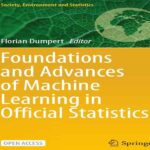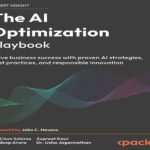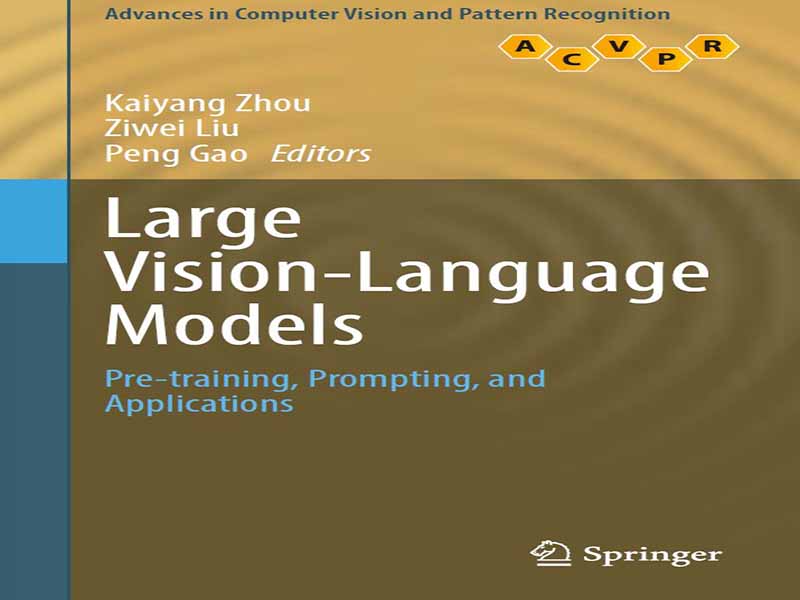- عنوان کتاب: Large Vision-Language Models -Pre-training, Prompting, and Applications
- نویسنده: Kaiyang Zhou
- حوزه: مدل زبانی
- سال انتشار: 2026
- تعداد صفحه: 432
- زبان اصلی: انگلیسی
- نوع فایل: pdf
- حجم فایل: 13.9 مگابایت
دستیابی به درک چندوجهی به عنوان یکی از متحولکنندهترین مرزهای هوش مصنوعی ظهور کرده است. توانایی ایجاد مدلهایی که میتوانند دادههای چندوجهی را تفسیر، استدلال و تولید کنند، نه تنها یک نقطه عطف فنی، بلکه یک جهش فکری در نحوه رویکرد ما به شناخت ماشین است. مدلهای بینایی-زبانی (VLMs) با ایجاد پلی بین حوزههای متمایز قبلی بینایی کامپیوتر و پردازش زبان طبیعی، راههای جدیدی را برای سیستمهای هوشمند باز کردهاند.
این کتاب، مبانی مدلهای بینایی-زبانی: مفاهیم و نقشه راه، با هدف ارائه مروری جامع بر مبانی نظری، پیشرفتها و چالشهای این حوزه به سرعت در حال تحول، نگاشته شده است. ما مفاهیم بنیادی که VLMها را تقویت میکنند، بررسی میکنیم و معماریهای منحصر به فرد، نقش پیشآموزش در مقیاس بزرگ و نمایشهای چندوجهی ضروری را که ستون فقرات این مدلها را برای درک و تولید تشکیل میدهند، روشن میکنیم. از طریق این کاوش، هدف ما ارائه درک روشنی از نحوه عملکرد VLMها، قابلیتهای آنها و ظرافتهای همترازی دادههای بصری و متنی به روشهایی است که امکان استدلال و تولید پیچیده را فراهم میکند.
کاربردهای VLMها گسترده و رو به رشد هستند – از تقویت سیستمهای تشخیص تصویر گرفته تا فعالسازی تولید محتوای بصری پیچیده و حتی ایجاد سیستمهایی که میتوانند با انسانها به روشهای طبیعیتر و شهودیتر تعامل داشته باشند. با این حال، در کنار این فرصتها، چالشهای مهمی نیز به وجود میآیند. با پیشرفت این حوزه، مسائلی مانند همترازی ویژگیها، مقیاسپذیری، الزامات دادهها و معیارهای ارزیابی نیاز به توجه و نوآوری مداوم دارند. علاوه بر این، نگرانیهای مربوط به ناکارآمدی محاسباتی و پیامدهای اخلاقی نیز مستلزم بررسی دقیق در هنگام نگاه به آینده این فناوریها است.
در این کتاب، ما یک نقشه راه برای تازه واردان و متخصصانی که علاقهمند به درک چشمانداز فعلی VLMها، محدودیتهای آنها و مسیرهای هیجانانگیزی که ممکن است در پیش بگیرند، ارائه میدهیم. هدف ما نه تنها ارائه یک راهنمای فنی، بلکه تأملی در مورد تأثیر گستردهتر این فناوری است که زمینه را برای موج بعدی پیشرفتها در هوش مصنوعی فراهم میکند.
ما امیدواریم که این کتاب به عنوان منبعی ارزشمند برای محققان، متخصصان و دانشجویانی که مایل به آشنایی با مفاهیم بنیادی و مسیرهای آیندهی VLMها هستند، مفید باشد. ما معتقدیم که توسعهی مداوم این حوزه نقش مهمی در شکلدهی به آیندهی هوش مصنوعی ایفا خواهد کرد و ماشینها را قادر میسازد تا با جهان به شیوههایی غنیتر، دقیقتر و انسانیتر از همیشه تعامل داشته باشند، آن را درک کنند و تولید کنند.
The pursuit of multimodal understanding has emerged as one of the most trans-formative frontiers in artificial intelligence. The ability to create models that can interpret, reason about, and generate both multimodal data is not only a technical milestone but also an intellectual leap in the way we approach machine cognition. Vision-Language Models (VLMs) have brought about a paradigm shift, bridging the previously distinct domains of computer vision and natural language processing to open new avenues for intelligent systems.
This book, Foundations of Vision-Language Models: Concepts and Roadmap, aims to provide a comprehensive overview of the theoretical underpinnings, progress, and challenges in this rapidly evolving field. We explore the foundational concepts that power VLMs, shedding light on the unique architectures, the role of large-scale pre-training, and the essential multimodal representations that form the backbone of these models for both understanding and generation. Through this exploration, we aim to present a clear understanding of how VLMs operate, their capabilities, and the nuances of aligning visual and textual data in ways that allow for complex reasoning and generation.
The applications of VLMs are vast and growing—from enhancing image recog-nition systems to enabling sophisticated visual content generation, and even creating systems that can interact with humans in more natural and intuitive ways. However, alongside these opportunities come significant challenges. As the field progresses, issues such as feature alignment, scalability, data requirements, and evaluation metrics require ongoing attention and innovation. Furthermore, concerns regarding computational inefficiency and ethical implications also demand careful considera-tion as we look toward the future of these technologies.
In this book, we offer a roadmap for both newcomers and experts interested in understanding the current landscape of VLMs, their limitations, and the exciting directions they may take. We aim to provide not only a technical guide but also a reflection on the broader impact of this technology, laying the groundwork for the next wave of advancements in AI.
We hope this book serves as a valuable resource for researchers, practitioners, and students who wish to engage with the foundational concepts and future directions of VLMs. It is our belief that the continued development of this field will play a critical role in shaping the future of artificial intelligence, enabling machines to interact with, understand, and generate the world in ways that are richer, more accurate, and more human-like than ever before.
این کتاب را میتوانید از لینک زیر بصورت رایگان دانلود کنید:
Download: Large Vision-Language Models





































نظرات کاربران